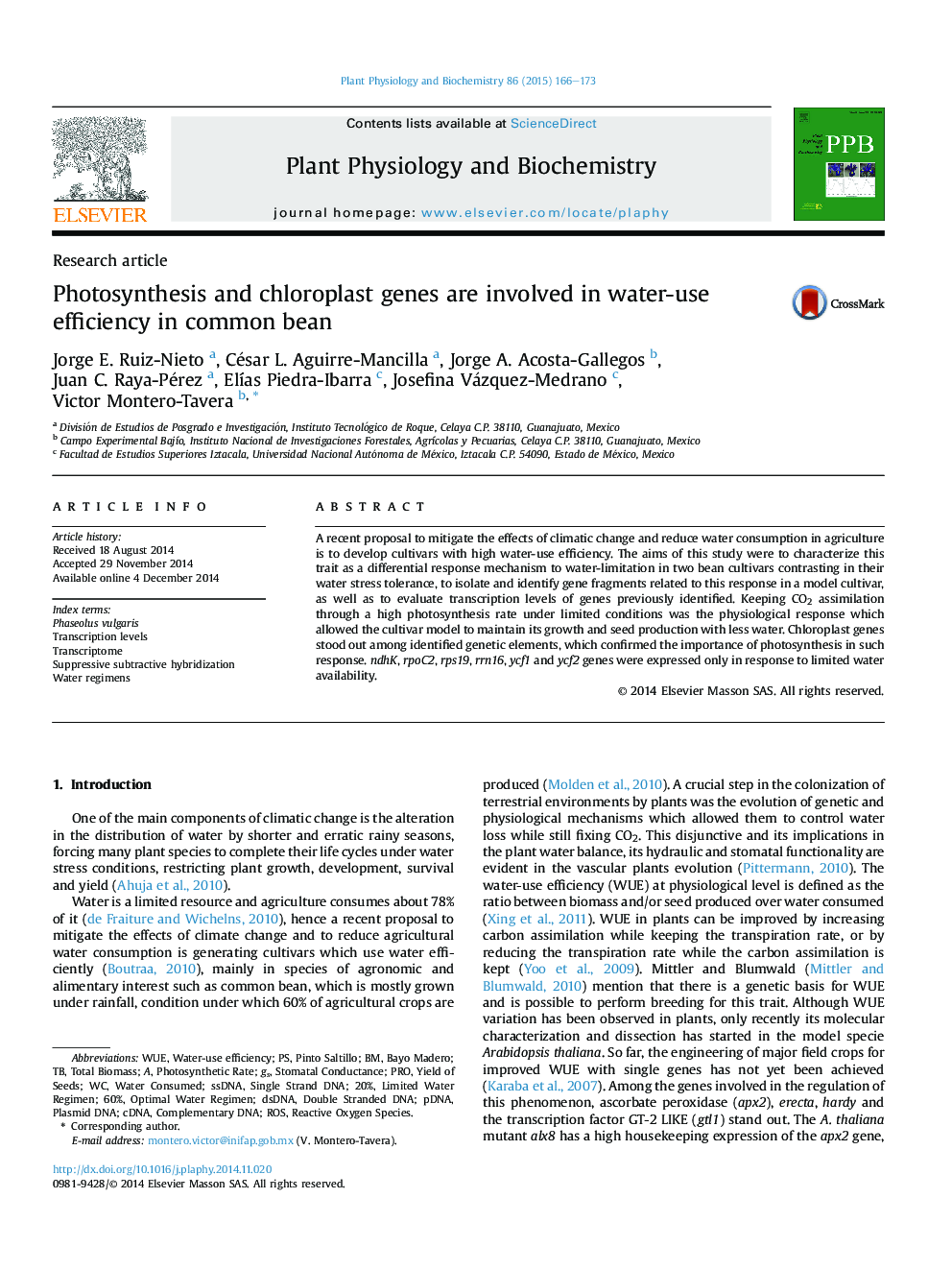| کد مقاله | کد نشریه | سال انتشار | مقاله انگلیسی | نسخه تمام متن |
|---|---|---|---|---|
| 2016032 | 1541935 | 2015 | 8 صفحه PDF | دانلود رایگان |
• The tolerant cultivar had higher photosynthetic rate and seed production.
• The tolerant cultivar showed a higher instant and integral water-use efficiency.
• Six chloroplast genes turned out to be related to water-use efficiency.
• Avoiding ROS accumulation was essential to respond to limited conditions.
• There was a lack of expression of drought genes under our experimental conditions.
A recent proposal to mitigate the effects of climatic change and reduce water consumption in agriculture is to develop cultivars with high water-use efficiency. The aims of this study were to characterize this trait as a differential response mechanism to water-limitation in two bean cultivars contrasting in their water stress tolerance, to isolate and identify gene fragments related to this response in a model cultivar, as well as to evaluate transcription levels of genes previously identified. Keeping CO2 assimilation through a high photosynthesis rate under limited conditions was the physiological response which allowed the cultivar model to maintain its growth and seed production with less water. Chloroplast genes stood out among identified genetic elements, which confirmed the importance of photosynthesis in such response. ndhK, rpoC2, rps19, rrn16, ycf1 and ycf2 genes were expressed only in response to limited water availability.
Journal: Plant Physiology and Biochemistry - Volume 86, January 2015, Pages 166–173
